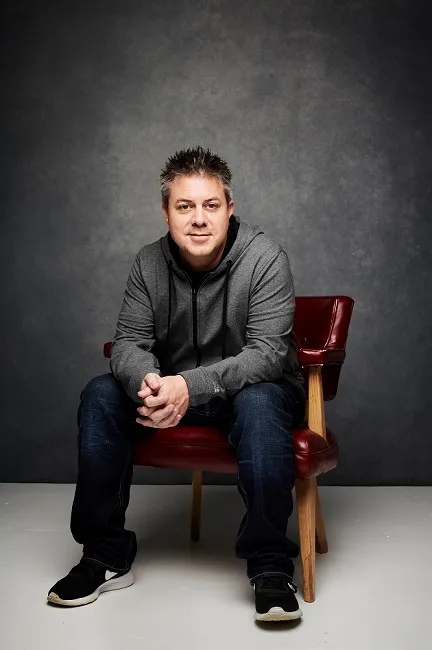When life coach and motivational speaker Tony Robbins was 24, he wanted to train U.S. soldiers to shoot better, despite having never fired a gun.
How can I—a guy who has never shot a gun—teach someone else to improve their shooting?, he wondered.
The first thing he did was find five sharpshooting experts and interview them extensively. He then cross-referenced his notes from all five interviews and found commonalities among them.
From those conversations he formulated his strategy for improving the accuracy of soldiers’ shooting: Bring the target closer.
He brought the targets only a few feet away for each student. Of course, everyone shot bullseyes. Then he moved them back one foot. Everyone shot perfectly again. Then he moved them another foot. More success. And so on.
This incremental and confidence-building improvement strategy increased shooting accuracy in the school by 50 percent.
All from the mind of a guy who had never before fired a gun.
…
I read about this yesterday in James Altucher’s excellent “10 Things I Learned While Interviewing Tony Robbins About His New Book ‘Money’.”
Altucher added one more anecdote from Robbins that really resonated with me.
Look at Goals Differently
Altucher wrote:
“Tony told us of one time he asked people what their goals were. One guy said, ‘I want to make a billion dollars!’ At first this would seem like an admirable goal—set it high! There’s that horrible saying, “Aim for the moon, because even if you miss it you’ll find yourself among the stars.
“But Tony said, this guy didn’t really understand his goal.
He broke it down. ‘Why do you want a billion?’ And the first answer was, ‘I want my own plane.’ Tony told him, ‘Well a plane costs $100 million and you might only be flying 12 times a year. If you charter a jet for $30,000 an hour then it will take you forever to spend $100 million.’ So suddenly the guy didn’t need $1 billion anymore. He needed $900 million.
“By the end of that session,” Tony said, “it turns out to achieve the exact lifestyle he thought he needed a billion for, he needed $10 million.” This is still a lot of money but this was Tony’s way of bringing the target closer.
“When I read that in his book, I did the exercise with Claudia (James’ wife). Her numbers went down by 90% when we really went through it. What happens then? You feel relief. You don’t have to be on the hamster wheel of money for your whole life. What you want is freedom, not money.”
The Five Steps to Succeed at Anything
In the interview with Robbins, Altucher said, “Ok, I figured it out. You use ‘the Tony Robbins Method’”. Which he defined as:
1. At first you don’t know anything.
2. You find five people who are the experts in the world.
3. You extensively interview them.
4. You figure out the most simple things they have in common with each other.
5. You do that simple thing over and over and over and over (repetition).
And that’s how you succeed at anything.
Elegant, it’s simplicity.
Discovering Shortcuts Usually Requires Knowing the Long Way
Whenever I move to a new city, I find I’m always travelling the main streets and busiest thoroughfares at first because they’re the easiest to remember and the first ones you get to know as you’re learning your way around.
Inevitably, as I drive around, over and over and over and over again, I hone my sense of direction and increase my comfort and familiarity with my surroundings.
After a year or two in a place? I learn all the side streets and back roads. The ones that help me avoid busy, annoying intersections, or help me efficiently navigate obstacles, or shave minutes off my work commute.
I learn the shortcuts and become a proficient driver only after learning the long way first.
…
We’re always looking for shortcuts.
To riches.
To physical fitness or attractiveness.
To expertise.
To love or sex or friends or success.
And maybe that’s a bad plan. Maybe if we accidentally find ways to improve speed and efficiency, it’s great or fortunate or because we’re fast learners.
But maybe most of the time the best way to get really good at something is to really embrace that incremental improvement mentality.
Maybe the best way to improve our lives is to always make sure we’re looking at goals differently.
You want to have a happy marriage?
Practice communicating with kindness and patience, no matter what. Love without expecting or demanding anything in return.
Never say mean things. Ever. And if you can never say something mean to your spouse for one day, maybe you can do it for two. And three. And four. And maybe after a month of kindness you realize you can do it every day and that it’s worth it because you feel peace and happiness you’ve never felt before.
If I did 50 pushups today, couldn’t I do 51 tomorrow? And 52 the next day? And 53 the day after that?
How long before I’d be the strongest I’d ever been?
We have these small successes. And we know we can improve upon them the next time. We can ALWAYS improve. Just 1%.
Just one measly percent.
And then we’re a little better. A little smarter. A little stronger. A little kinder. A little richer. A little happier.
And then someone asks you how you are.
“I’m great. Really great,” you say.
And you smile.
Because it’s true.
You are great.



You nailed it right on the head.
Thank you. Actually, all these other smart guys nailed it and I just read them and felt compelled to share something that moved me.
But I really appreciate you saying so.
I think these are important lessons these guys are discussing and writing about.
You learned it from them, but you still learned it for yourself and that is the part we all need to nail.
Just a couple days ago, I was telling my boyfriend that I had no idea how to reach the goals I’d set for myself. One of those is to become a successful writer. (More specifically, my main goal is to get a novel published.) My boyfriend’s actually the one who nudged me to start blogging. (Or bring the target closer, so to speak.) I’m going to try to follow the things you’ve shared here, and see where it gets me. Thanks a ton!
Yeah. What would stop you from writing a chapter and publishing it? A first draft. As for feedback. See what characters and plot lines people respond to?
There doesn’t have to be any rules.
But I know the old system of writing a novel and waiting for a publisher to give you permission to distribute it are OVER.
You write. You share. The world gets to decide what to do with it. Some will be okay. Some will be good. Some will be great.
Maybe once you assemble enough great and get enough feedback from the audience you build, the book will have completely written itself, and you’ll already have a group of people hungry to read it?
I don’t know. I’m not a published author.
But the barrier to entry for blogging is super low anymore, and when you write, people will find you.
Congratulations on taking the plunge. And thank you so much for taking time to read stuff here.
It sorta reminds me. I was into making radio-controlled model boats at one time. Buying a decent engine-lathe is the pipe-dream of just about every scale modeler of tug-boats and steam engines, so of course I wanted one. Then somebody pointed out how many parts I could have made by a machine shop for the cost of an engine lathe, and suddenly the machine didn’t seem so appealing. Especially today, when living in an apartment and keeping a small machine-shop on premises are not compatible ideas.
So— would it be nice to have an engine-lathe, and while we’re at it a milling machine and a surface grinder? You bet it would, I could make just about anything that could be made of steel with that. But– considering the number of parts I am ever likely to need made in a lifetime of R/C scale boat building– it’s cheaper by far to have the parts made as needed by area shops. So, maybe I don’t “need” to win the Mega Power-Ball Big Bucks Lottery. A regular job will do.
Well said, that really sums up the new meaning of setting our goal. Thanks for the great post!
I loved this! Bring the target closer, indeed.
This post, I loved it. I like the incremental goal building stuff. I also like the idea of bringing the target closer. Thanks!
Pingback: Bring the Target Closer | Self Made Life